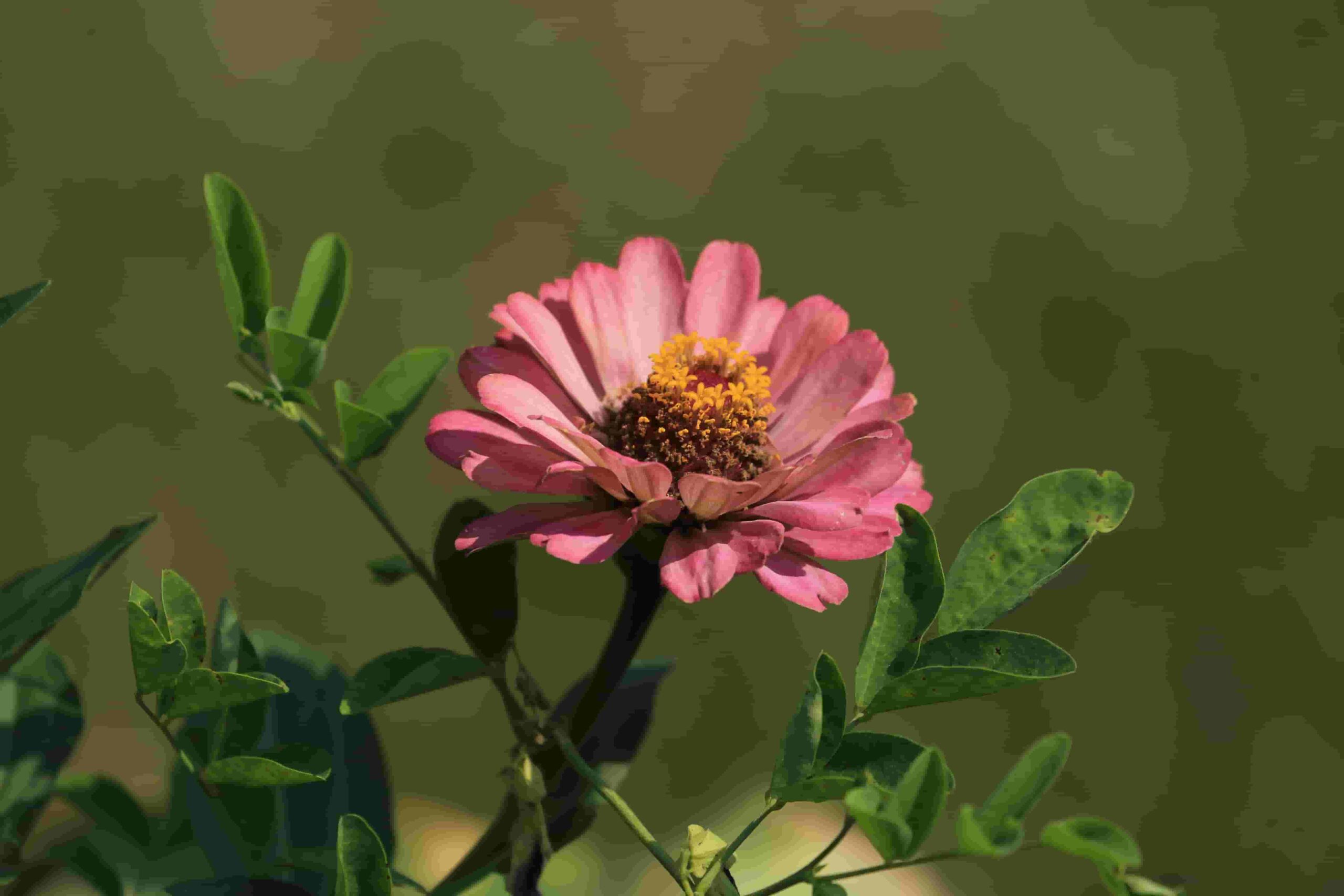परिचय
When it comes to bringing vibrant colors and beauty to your garden, few flowers can rival the charm and versatility of zinnias. These lovely blossoms are a favorite among garden enthusiasts because of their great range of colors, sizes, and shapes. The intriguing world of zinnias, its various types, cultivation advice, and the various ways you may use them in your garden will all be covered in this article. Let’s dig in and learn more about these alluring flowers’ charms!
1. The History of Zinnias
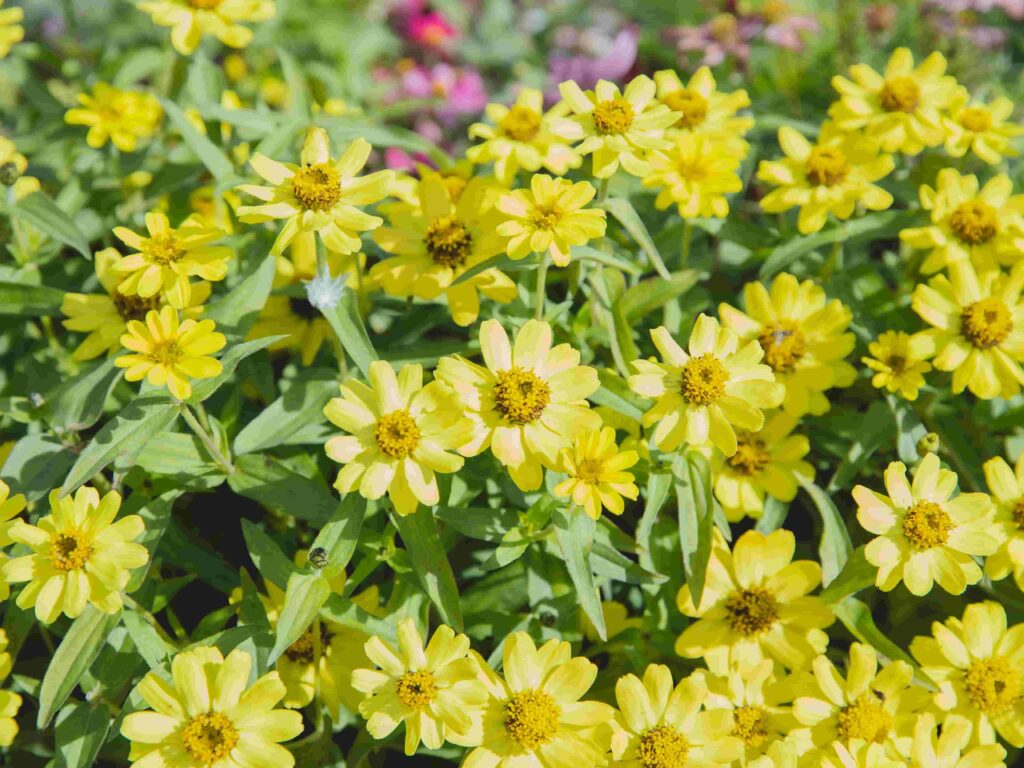
Zinnias, scientifically known as Zinnia spp., are native to Mexico and Southwestern United States. They received their name from the 18th-century German botanist Johann Gottfried Zinn, who was the first to describe the plant. Initially, zinnias had limited color variations, but through breeding efforts, their diversity expanded, resulting in the beautiful assortment of colors we see today.
2. Types of Zinnias
2.1. Zinnia elegans
Zinnia elegans, commonly known as the common zinnia or youth-and-old-age, is the most well-known species of zinnias. Large, daisy-like flowers with a variety of hues, including red, pink, orange, yellow, and purple, can be seen on it. The plants are great for borders, cutting gardens, and pollinator attraction because they may grow up to 3 feet tall.
2.2. Zinnia angustifolia
Zinnia angustifolia, also referred to as narrow-leaf zinnia, is a low-growing variety with slender leaves and smaller, single-petaled flowers. It is highly heat and drought tolerant, making it an excellent choice for hot and dry climates. This type of zinnia is often used in rock gardens, containers, and as ground cover.
2.3. Zinnia haageana
Zinnia haageana, commonly called Mexican zinnia or Haage zinnia, is a compact variety known for its fiery, warm-colored flowers. It blooms profusely and adds a burst of color to any garden. Mexican zinnia varieties are perfect for borders, mass plantings, and attracting butterflies and hummingbirds.
3. Growing Zinnias
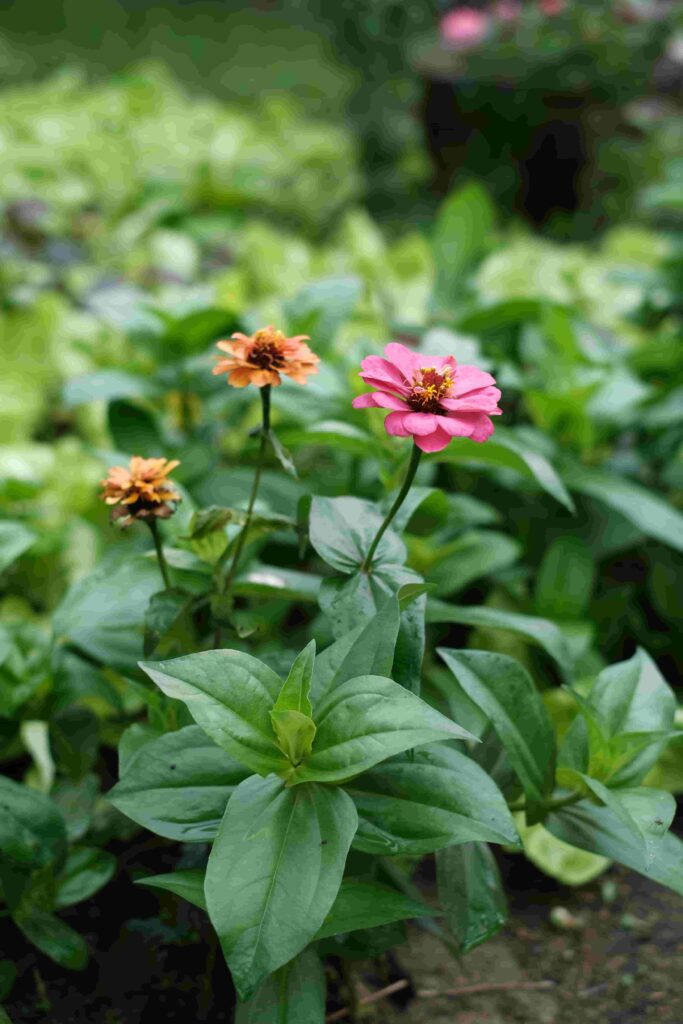
3.1. Selecting the Right Location
Choose a spot in your yard that receives at least 6 to 8 hours of direct sunlight daily because zinnia plants prefer full sun. Ensure the area has well-draining soil and is protected from strong winds, as these plants can be prone to toppling over.
3.2. Soil Preparation
Prepare the area by loosening the soil with a garden fork or tiller. Zinnia plants thrive in rich soil abundant in organic matter. To enhance soil fertility and drainage, incorporate compost or well-rotted manure. Aim for a pH level between 6.0 and 7.5, which is slightly acidic to neutral.
3.3. Planting Zinnias
When the earth has warmed up, zinnia plants can be sown straight into the garden or grown from seeds indoors four to six weeks before the last day of the frost. The seeds should be sown 1/4 inch deep, and they should be spaced 6 to 18 inches apart or as advised by the variety. After planting, water lightly to let the soil surrounding the seeds settle.
3.4. Watering and Maintenance
Keep the soil evenly moist but not waterlogged. Zinnia plants have moderate water needs and can tolerate short periods of drought. Water at the base of the plants to prevent the foliage from getting wet, as this can lead to disease issues. Remove any weeds around the zinnia plant to minimize competition for nutrients and water.
3.5. Dealing with Pests and Diseases
Zinnia plants are relatively pest and disease resistant, but they can occasionally encounter problems such as aphids, powdery mildew, and leaf spot. Monitor your plants regularly and take appropriate measures if any issues arise. Organic insecticidal soap and neem oil can help control pests, while proper spacing and good air circulation can prevent diseases.
4. Creative Uses for Zinnias
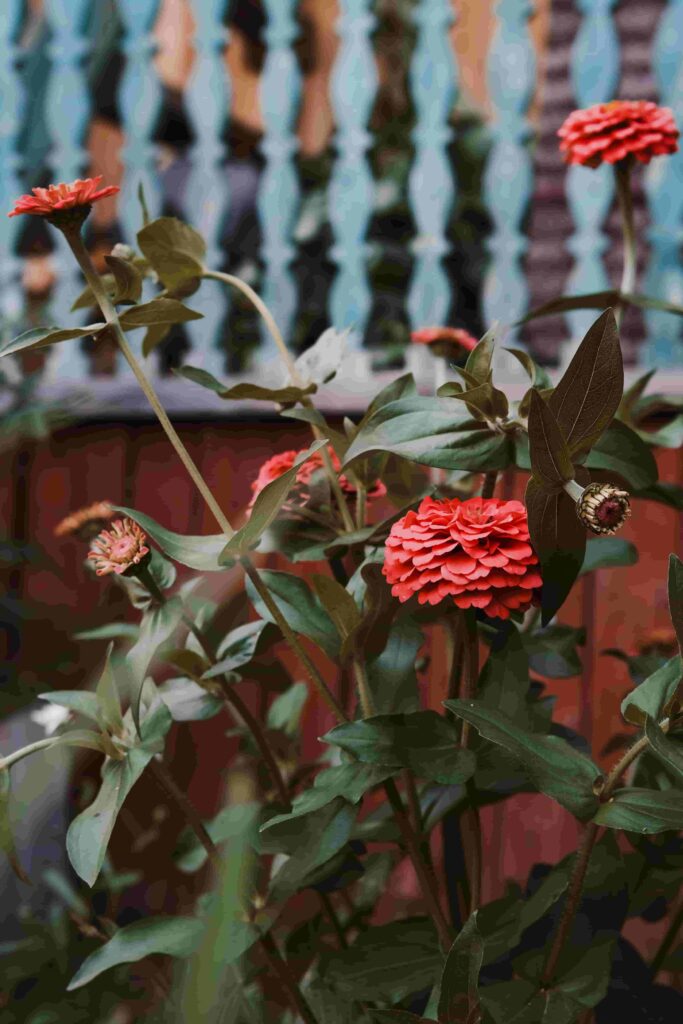
Zinnia plants offer a multitude of creative possibilities in your garden. Here are some popular uses:
4.1. Cut Flowers and Floral Arrangements
With their vibrant colors and long-lasting blooms, zinnias are a favorite choice for cut flowers. Harvest them when the flowers are fully open but before they start to wilt. Use them in bouquets, centerpieces, or any floral arrangement to add a touch of natural beauty to your home.
4.2. Butterfly and Pollinator Gardens
Zinnia flowers are excellent nectar sources for butterflies, bees, and other pollinators. By planting zinnia, you can create a haven for these beneficial insects and support local ecosystems. Combine different varieties to attract a wide range of pollinators and enjoy the lively presence of fluttering wings in your garden.
4.3. Container Gardening
Zinnia plants are well-suited for container gardening. Their compact size and abundant blooms make them perfect for adding a splash of color to balconies, patios, or small gardens. Choose dwarf or bushy varieties and pair them with complementary plants for eye-catching container displays.
4.4. Edging and Borders
Create stunning edging or border displays with zinnias. Their bright hues and diverse forms can add definition and visual appeal to your garden beds. Mix and match different colors and heights for aneye-catching border that will impress every visitor.
4.5. Zinnias in Vegetable Gardens
Integrating zinnia plants into your vegetable garden not only enhances its aesthetic appeal but also provides numerous benefits. Zinnia flowers attract pollinators that can improve the yield of your vegetable plants. Additionally, their vibrant colors can help deter certain pests and create a visually appealing contrast against the green foliage of your vegetables.
5. Tips for Extending the Blooming Season
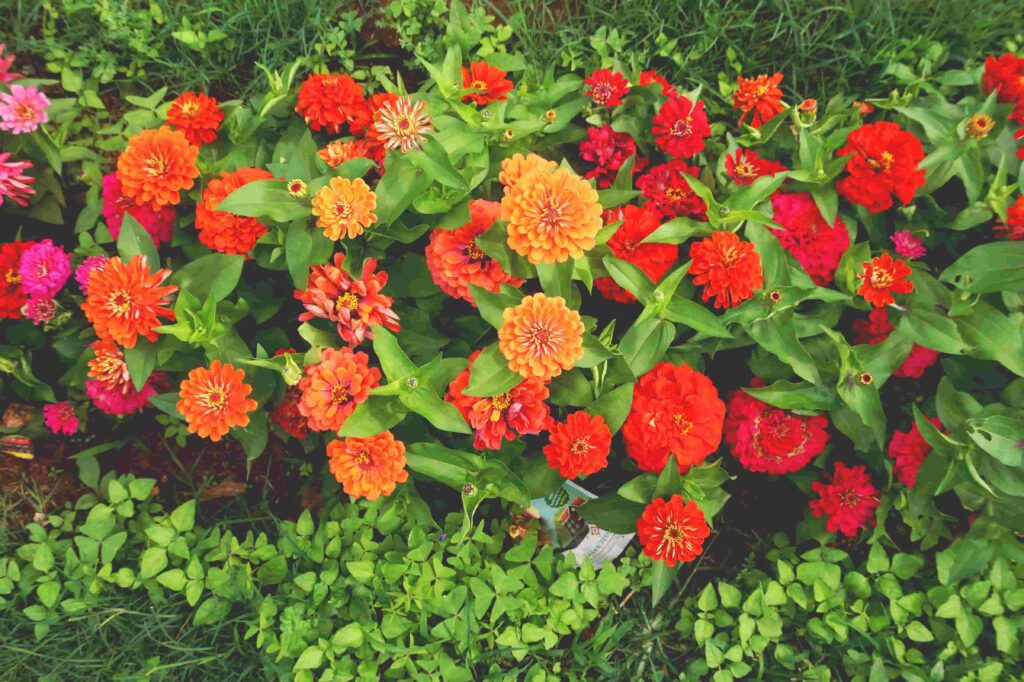
To enjoy zinnias’ beautiful blooms for a longer period, follow these simple tips:
5.1. Deadheading
Regularly remove faded flowers by cutting them just above a set of leaves or buds. This process, known as deadheading, encourages the plant to produce new blooms and prevents energy wastage on seed production.
5.2. Pinching Back
When zinnias reach about 6 to 8 inches in height, pinch back the top growth by about 1 to 2 inches. This promotes branching, which makes plants bushier and more floral as a result.
5.3. Succession Planting
Plant zinnias in successive waves or staggered intervals. This technique ensures a continuous supply of fresh blooms throughout the season. Start new seeds or transplant seedlings every few weeks to replace fading plants.
निष्कर्ष
Zinnias are undoubtedly a delightful addition to any garden. With their stunning colors, versatile varieties, and easy cultivation, they offer endless possibilities for creative expression. Whether you choose to use them in cut flower arrangements, attract pollinators, or enhance your garden’s overall beauty, zinnias are sure to captivate and inspire. So, why wait? Embrace the charm of zinnias and transform your garden into a vibrant oasis of color and life!
Frequently Asked Questions (FAQs)
Are zinnias annual or perennial flowers?
Zinnias are annual flowers, which means they complete their life cycle within one growing season. However, they readily reseed themselves, allowing them to appear year after year in suitable conditions.
How long do zinnias bloom?
The blooming period of zinnias can vary depending on the variety and growing conditions. Generally, they bloom continuously from early summer until the first frost, providing a vibrant display of color for several months.
Can zinnias tolerate hot and dry conditions?
Yes, zinnias are known for their tolerance to hot and dry conditions. They are relatively drought tolerant once established and can withstand high temperatures, making them an excellent choice for arid regions.
Do zinnias attract butterflies?
Yes, zinnias are highly attractive to butterflies. Their bright colors and abundant nectar make them a magnet for these beautiful pollinators. By planting zinnias, you can create a butterfly-friendly garden and enjoy the enchanting sight of fluttering wings.
Can zinnias be grown indoors?
Zinnias are primarily outdoor plants that thrive in full sun. While it’s possible to grow them indoors in bright locations, they may not perform as well as they would in a sunny garden. Adequate light, proper air circulation, and regular care are essential for successfully growing zinnias indoors.

